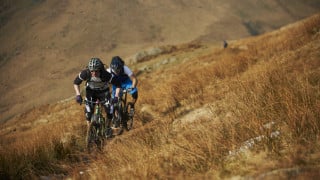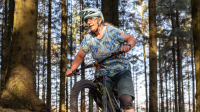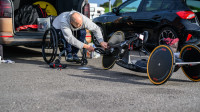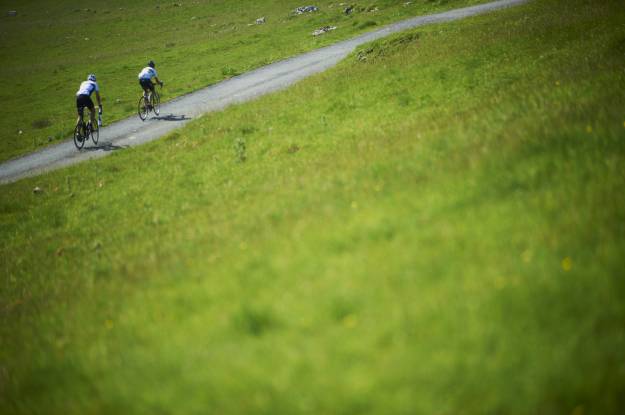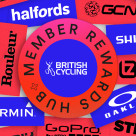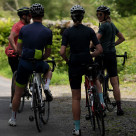Knowledge Level: Beginner
If you or a riding mate have a cycling accident, whether on the road or on the trails, do you know what to do and how to get help?
On the road
If you’re riding on your own, carrying some form of ID and an unlocked mobile phone with an ICE (In Case of Emergency) number stored in the contacts. These are all key items in the essential ride kit that you should carry every time you head out. This will significantly assist the emergency services or anyone stopping to assist should you have an accident and lose consciousness or are seriously injured.
If you have an accident but don’t think you’re seriously injured, make sure first that you and your bike are clear of the road and traffic.
If there is a vehicle involved, and the driver has stopped or there were any witnesses, exchange details, including registration numbers, in the same way as if you had been involved in any traffic accident.
Use the camera on your phone to gather any information or evidence from the accident scene. If you were using a video camera, make sure you’ve stopped it so that the recording of the incident doesn’t get accidentally overwritten.
If you have any doubts about whether you’ve been injured, especially if you hit your head, go to your nearest Accident and Emergency or Minor Injuries department to get checked out. If you suspect you may have suffered a head injury, call an ambulance straight away and do not attempt to cycle any further.
Report the accident to the police as quickly as possible. Any delay is likely to lessen your case if a claim of prosecution is to be made. If you or your bike, have been damaged and you’re a British Cycling Member, contact British Cycling for legal support.
If you’re riding with a group and someone has an accident and is injured, or you witness another cyclist getting injured, follow the next simple steps:
Firstly, consider your own safety, the safety of other members of your group, the on-going safety of the casualty and the safety of other road users as you don’t want to make the situation worse. Use other members of the group to ensure that other road users are aware of the accident scene. This will ensure no further accidents occur. Make sure that all injured parties are safe from further harm. If you suspect any injury to the spine, try your upmost not to move them.
Find out if anyone in your group or at the scene has any first aid qualifications and follow their instructions or, if you hold a qualification, follow the procedures you learned.
Contact the emergency services. Dial 999 or 112. Even if your network hasn’t got coverage, you still may be able to make a 999 call. Be prepared to give them details of your location, what happened and any information you’re able to provide on the casualty. If you are concerned about the condition of the casualty and no-one has any first aid knowledge, the emergency telephone operator will be able to talk you through what to do. Make the casualty as comfortable as possible until the emergency services arrive and ensure they are kept warm.
Off-road
If you’re mountain biking, you’re more likely to be in a location where it could take a significant amount of time for the emergency services to reach you. This means that carrying the appropriate kit, having a working knowledge of first aid and how to call for help is even more important than on the road.
Whether you’re riding on your own or in a group, it is good practice to always leave someone information about approximately when you expect to be back from your ride and details of where you intend to go. That way, if you do not return at the expected time, they will be able to alert the emergency services.
If you’re on your own and are unable to move, make yourself as comfortable as possible using your first aid kit, spare clothing and foil survival blanket. If you have a mobile telephone, keep it switched on.
If you have a mobile phone call 999 or 112, ask for the police and then for Mountain Rescue. Do not ask for an ambulance as this will delay help getting to you. Remember, even if you don’t have a mobile phone signal on your network, you can often still make an emergency call as it automatically connects to other networks in range.
Have the following information ready:
- A six-figure grid reference of your location and any information about the terrain that may be relevant to a rescue team.
- Details of your injury.
Register your mobile to be able to text message the emergency services as, in remote areas, there sometimes won’t be a strong enough signal to make a call but a text will often go.
If you are unable to make any sort of contact using your phone, three blasts on a whistle is an internationally recognised signal for assistance. Pause for one minute and repeat the signal until you get a response. Many rucksacks have a whistle as part of their chest strap or carry one separately. If you haven’t got a whistle, follow the same protocol but with shouts or, if at night, flashes with a torch.
If you’re riding in a group and someone has an accident or you come across a casualty on the trail, first ensure you’re not endangering yourself or others by approaching them.
Find out if anyone in your group or on the scene has a first aid qualifications and follow their instructions or, if you hold a qualification, follow the procedures you learned. A number of first aid courses are specifically tailored towards outdoors and adventure activities. If you ride regularly, you should seriously consider attending one.
Follow the advice above for calling for help, making sure you have the necessary information about your location and the casualty. You may decide if you’re unable to make contact with the emergency services and are near to a trailhead, road or village, that sending someone for help is the best course of action. Be aware though that you don't want to create additional casualties and it may be better for your group to stay together.
General riding alone
Whether you are riding on or off road, register your mobile telephone with a locating service such as: find my iphone, find my Samsung.
Let others at home know the details and login. This way, if you are not back, they will be able to log in to a computer and try to locate you. This may well prove crucial in getting help to you in those important first few hours.
Even during daylight hours, ride with a rear light on your bike. This will maximise the opportunity for other road users seeing you well in advance.

